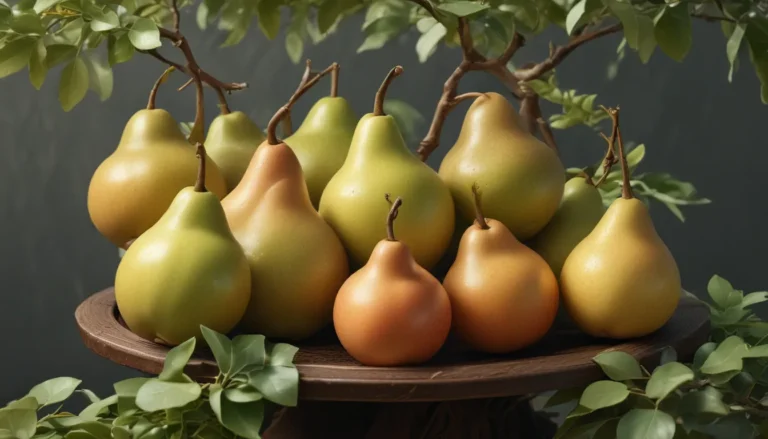Planting and Growing Lilies: A Comprehensive Guide

Lilies, the flamboyant flowers adored by florists and gardeners alike, are known for their stunning blooms and captivating scent. While they may seem exotic and difficult to grow, the reality is quite the opposite – these hardy bulbs are easy to cultivate and adapt well to various conditions.
In this detailed guide, we will explore everything you need to know about planting and growing lilies. From understanding the different types of lilies to learning about their cultivation, propagation, and maintenance, we will cover it all. So, whether you are a seasoned gardener or a novice looking to add these beautiful flowers to your garden, this article will provide you with valuable insights and tips to help you succeed.
What Are True Lilies?
True lilies belong to the Lilium genus in the Liliaceae family, characterized by their large, showy flowers grown from scaly bulbs. Distinguished from other lily-named plants, true lilies are classified into nine divisions based on bloom times, flower forms, and growth habits. Hybrid cultivars continue to expand the selection of lilies available to gardeners, making them a versatile and rewarding choice for any garden.
The Lily Register: Understanding Lily Classification
The Lily Register, developed by the Royal Horticultural Society, classifies true lilies into nine divisions based on their characteristics and parentage. While all divisions offer unique qualities, popular choices include Asiatic, Oriental, and Trumpet hybrids. Each division presents a variety of colors, fragrances, and forms, allowing gardeners to choose lilies that best suit their preferences and growing conditions.
Cultivation and History of Lilies
Lilies are upright perennials that thrive in temperate regions across Asia, Europe, and North America. With lance-shaped leaves and a diverse range of flower shapes and colors, lilies are a delightful addition to any garden. Their bulbs, which lack a papery tunic, require a lightly moist environment for optimal growth. From late spring to summer, lilies bloom in a spectacular array of colors, excluding blue. With a rich history and cultural significance, lilies have been cultivated for centuries and hold a special place in gardens worldwide.
Lily Plant Propagation: How to Grow New Lilies
Lilies offer several methods of propagation, including bulb scaling, offsets, stem bulbils, and seeds. While bulbs and offsets are ideal for hybrid cultivars, species lilies can be grown from seeds. Each propagation method requires specific care and attention, allowing gardeners to expand their lily collection and enjoy a continuous bloom cycle.
How to Grow Lily Flowers: Planting and Care Tips
Growing lilies requires well-draining, rich soil with a neutral to slightly acidic pH. Planting bulbs at the proper depth, providing adequate spacing, and ensuring proper air circulation are essential for healthy growth. With full to partial sun exposure, lilies thrive in various garden settings, from beds and borders to containers and naturalized areas. Proper watering, fertilization, and maintenance are crucial for a successful lily garden, ensuring a bountiful display of blooms throughout the growing season.
Lily Cultivars to Select: Choosing the Right Lilies for Your Garden
With a wide range of lily cultivars available, selecting the right varieties can enhance your garden’s beauty and diversity. From Asiatic and Oriental hybrids to Trumpets and species lilies, each division offers unique characteristics and flowering times. Popular choices include ‘Landini,’ ‘African Queen,’ and ‘Star Gazer,’ known for their vibrant colors and fragrant blooms. Whether you prefer early spring flowers or late summer blossoms, there are lilies to suit every garden style and preference.
Managing Pests and Diseases: Keeping Your Lilies Healthy
Despite their resilience, lilies are susceptible to common pests like aphids, lily leaf beetles, and deer. Preventive measures such as proper spacing, watering, and fertilization can help minimize pest infestations. Additionally, diseases like botrytis and lily mosaic virus can affect lilies, requiring prompt treatment and removal of infected plants. By maintaining good planting practices and monitoring for signs of pests and diseases, gardeners can ensure their lilies remain healthy and vibrant throughout the growing season.
Best Uses for Lily Flowers: Enhancing Your Garden with Lilies
Lilies are versatile plants that can be used in various garden settings, from mass plantings to borders and containers. Their vibrant colors and elegant blooms make them a popular choice for cut flower arrangements and naturalized areas. By incorporating lilies into your garden design, you can create a visually appealing and fragrant landscape that attracts pollinators and enhances the overall beauty of your outdoor space.
In conclusion, lilies are spectacular flowers that add color, fragrance, and elegance to any garden. By following the tips and guidelines outlined in this comprehensive guide, you can successfully plant and grow lilies in your garden, creating a stunning display of blooms that will brighten your outdoor space throughout the growing season. Whether you are a seasoned gardener or a novice enthusiast, lilies are a rewarding and enchanting addition to any landscape.
Do you have a favorite lily variety? Share your experiences and garden adventures with us in the comments below! And if you are looking for more tips on gardening and plant care, be sure to explore our other informative guides on flowers, vegetables, and landscaping ideas.
Plant. Grow. Blossom. Your journey to a beautiful garden begins with lilies!





